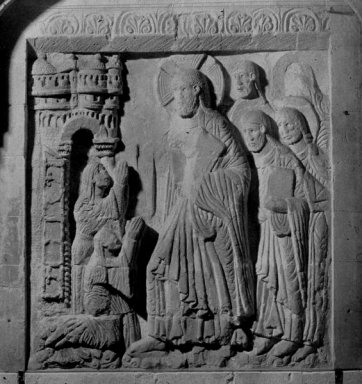The real problem is Luke. It is quite clearly the same narrative as John, so must have been derived from the same source, and yet chronologically it is not related to the passion events at all. What is more, in chapter 10 Luke describes a visit to the house of Martha and Mary, in which Mary is taken to task for sitting at Jesus's feet and listening to him, leaving Martha to do all the work. (This is a popular image, especially in Dutch art, offering an opportunity to paint a wide array of meat, vegetables, and so on. Jesus and Mary are usually hidden away in the back of the picture.) The identity of the two Simons I'll look at on the next page. A further similarity with John's account is that the events are preceded by a resurrection from the dead. (Ch 7 v 12 - 17) . In this case, a young man being carried on a bier. Unlike Lazarus, true, but verses 16/17 are reminiscent of John: And there came a fear on all: and they glorified God, saying, That a great prophet is risen up among us; and, That God hath visited his people. And this rumour of him went forth throughout all Judaea, and throughout all the region round about. |
| The events in art The raising of Lazarus has been a popular subject in art from the very beginnings of Christianity, as we'll see on the next page. The other events appear far less often. We can start the story, though, with a unique sculptural image from Chichester Cathedral, West Sussex, showing the arrival of Christ and the apostles at the house in Bethany. The adjacent sculpture shows the raising of Lazarus, which confirms the subject of this one. |
|
|
